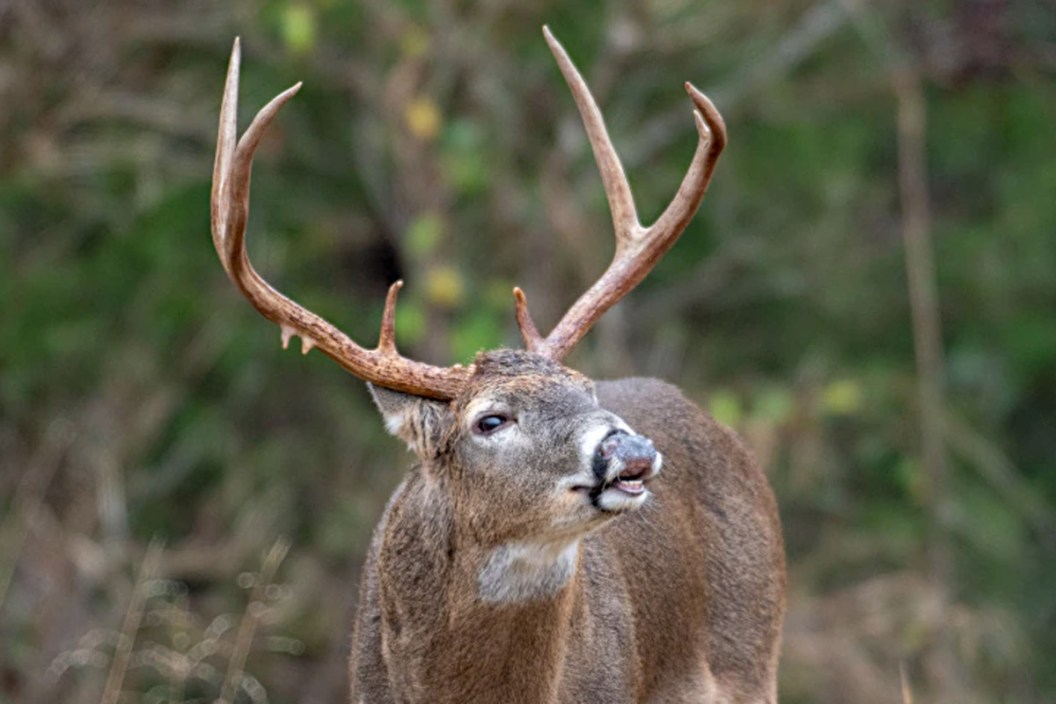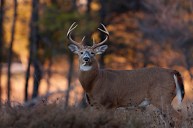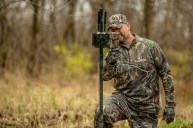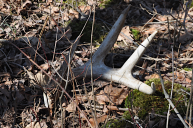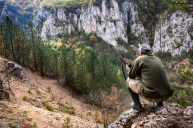Even though we're struggling to sit patiently while we wait for the off-season to end, those first archery deer hunting seasons will be here before we know it. And, if you've hunted long enough, you know deer hunting success is almost entirely determined by preparation, which means now is the time to start scouting for deer and selecting stand locations. There's an endless list of ways you can increase your odds of crossing paths with that big buck this season, but all of them require you to put in some work. Because most experienced hunters know this, today's article is geared more toward newer hunters who are perhaps new to deer hunting and unfamiliar with popular scouting tactics. However, even if you've tried all of these things before, a nice refresher on deer behavior never hurt anyone. These scouting tips speak to whitetail deer, but they apply to many mule deer and blacktail deer parameters, too.
Food sources

Travis Smola
The key to almost every good hunting spot is finding a source of nutrition, whether it's a natural forage like acorns or a large agricultural field of beans or corn. These spots have a huge influence on the way deer travel all year long. In the early season, food plots are typically honey holes, as deer haven't started feeling pressure yet and and they'll get a little more risky for the chance at finding a hot doe. Then during the rut, even though bucks aren't as focused on eating, they're still going to follow the does that do want to eat. However, as the season winds down, deer that have survived hunting pressure throughout the early months tend to congregate in those same feeding areas to stock up for winter, offering up more opportunities to hunters.
You don't have to hunt directly on a food source, either. Using technology like OnX Hunt or Google Earth, you can often spot travel corridors that will lead you to those areas. If you can identify a trail where cover or water funnels the deer through only one possible route, go ahead and set up your treestand as soon as possible.
However, while you're still in the dog days of summer, go ahead and try to set up a trail camera near those food sources so you can effectively take stock of the herd. It's a lot easier to hunt a patch of land when you have a decent idea of what's actually out there. Plus, it's nice to be able to watch the bigger bucks' antlers develop, and those nutrients make it happen that much faster. Find a heavily-used field and then use a spotting scope to glass it at a distance in the evenings just before dusk. This is the best time to catch a glimpse of a bachelor group of bucks. Just remember that the deer you see in a field during the summer may not necessarily be there during the season.
Tracks

This may seem obvious, tracks are an element of deer sign that's overlooked far too often on scouting trips. Hunters are so easily distracted by scrapes and rubs (more on those later), that they forget a buck passing through could leave a bunch of sign and then never return, which could lead to you wasting a lot of your time in a bad spot. However, if an area is truly hot, you're going to see it on the ground. In my personal opinion, the best time to scout is right after a rain or just before the snow melts, as the natural elements will sharpen a set of fresh tracks and show you exactly where the deer are hanging around. If you find a trail that's a muddy mess from being tracked up all the time, you probably just hit the jackpot in finding yourself a deer highway and should start looking for spots to put a stand.
To all the newbie hunters: you'll often hear old-timers identify a track with splayed toes and a dew claw as a "buck track." However, this is something of a misnomer, as it could be a buck track, but not always. It could just as easily be a doe running hard and fast, or if the ground was super soft, the deer's feet could've sunk in causing the toes to give that "splayed" look. Both bucks and does have dew claws, so that doesn't mean all that much. The size of the track isn't irrelevant, but there are plenty of large, old does that can make you think you're looking at a trophy buck.
The most effective way to use tracks is to determine a presence and consistent movement. If you're seeing a lot of tracks, you're probably in a popular area.
Deer Scrapes
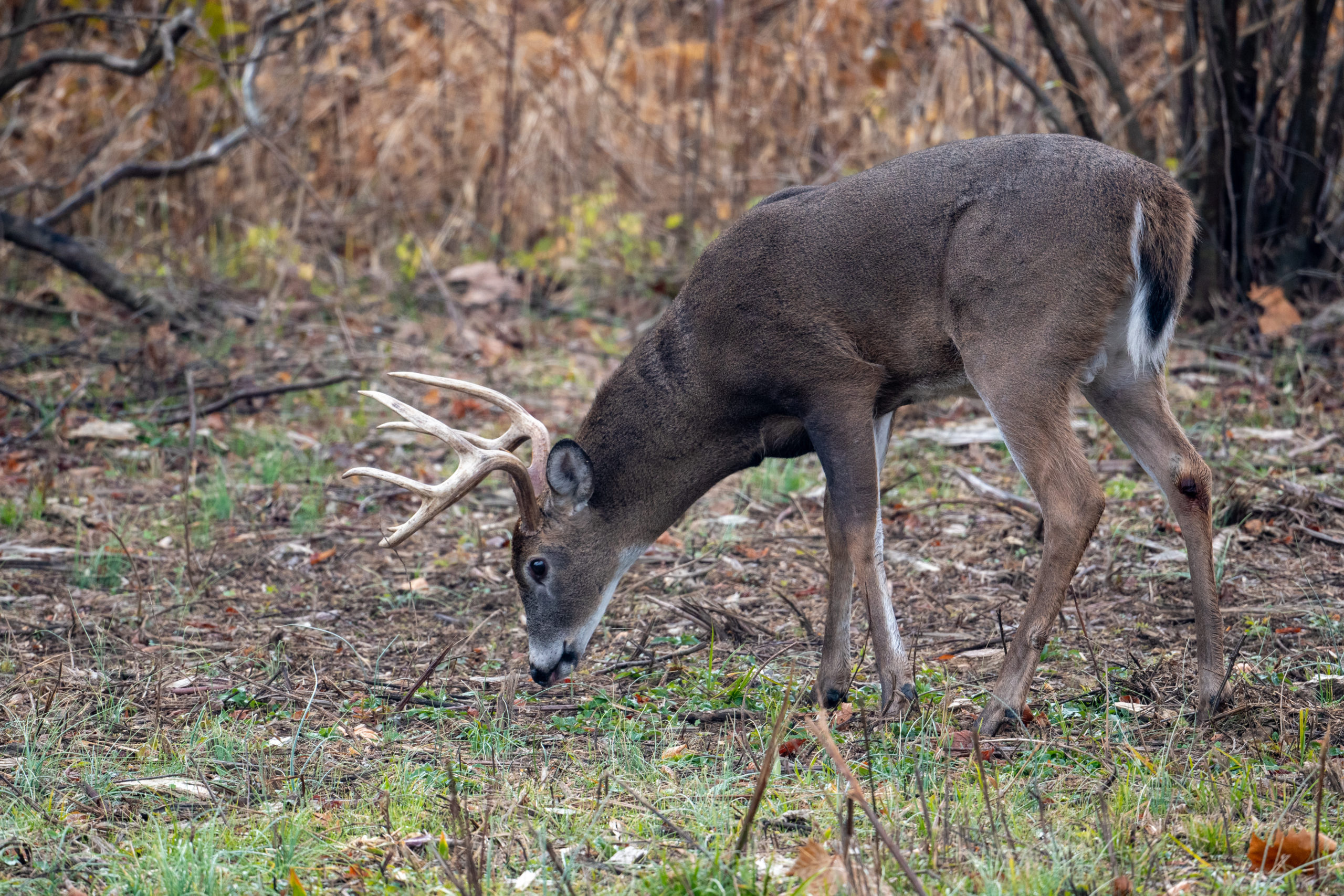
Many newer hunters get confused about the difference between a scrape and rub because the two words have a similar connotation. Just remember that a scrape is when a buck paws up the soil on the ground, creating a bare patch of soil, which he urinates in to make his presence known to other deer. Bucks will also snap a branch above the scrape that often hangs down like a big neon sign saying, "There was a buck here!" Bucks will spread more scent all over this branch by licking it, rubbing their face on it, and racking it with their antlers.
Scrapes are primarily buck sign, but are still somewhat of a mystery to most scientists. We do know they are a way of deer communication. Scrapes are generally thought to be a buck's way of marking its territory. And, does will regularly visit those scrapes and like the branches above them, and I have hundreds of trail camera photos to prove it. No one knows for certain does use this to communicate with bucks, but it's a seemingly consistent dynamic between the two sexes.
Continued observation is key with scrapes, as bucks often make scrapes erratically, leaving them anywhere and everywhere and never returning to most. So, your best bet is to look for scrapes that are refreshed every time you visit. A trail camera is a good for deer hunters way to determine if a scrape is worth spending time on. Time stamped photos allow you to see exactly how often and at what times the buck is visiting.
Rubs
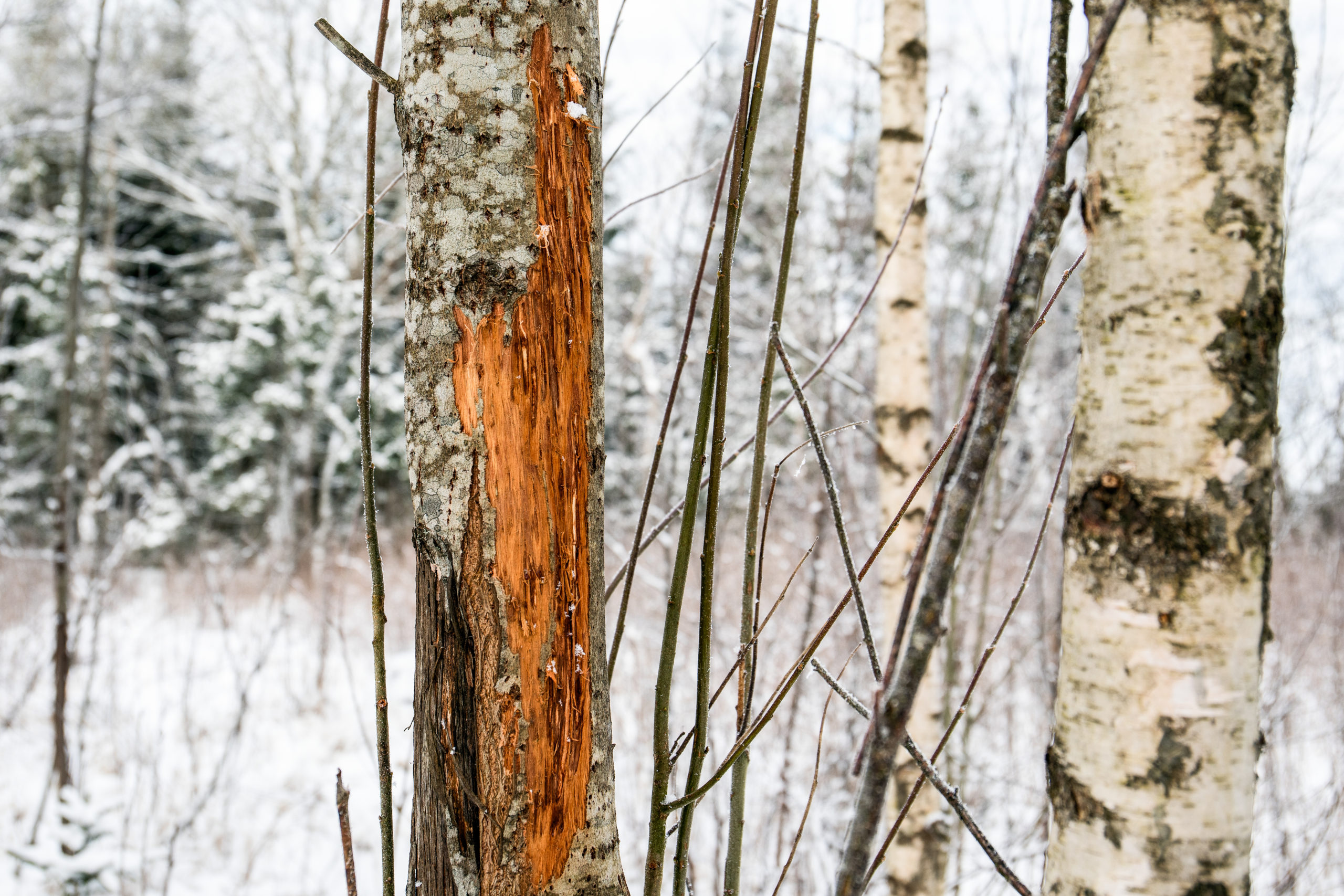
This is one of the biggest signposts a buck was in the area. Every fall, bucks will rake their antlers on trees, often cleanly peeling off bark, leaving "a buck was here" indicator like a kid at summer camp. Bucks rub trees for many reasons. In the early season, rubbing helps bucks peel and shed the velvet off their antlers. Later on, however, they serve as another way for bucks to mark their territory. But, similar to scrapes, one rub will often have multiple visiting bucks.
In the fall, bucks get so juiced up on testosterone before the rut that rubs are also sometimes made simply to vent frustration. Seven years ago, I shot a gnarly 10-pointer on the opening day of Michigan's firearms deer season that had been rubbing trees so hard that it looked like he had sawdust on his head and antlers with all the bark that was on it. Some of that bark is still in the antlers on the European mount to this day. That buck clearly had a lot of pent-up aggression!
It is not uncommon to find rub lines with dozens of trees torn apart on food plots and in clearcuts. While these are a good indication that bucks are in the area, do be wary about hunting them. Many gun and bowhunters will find better success hunting the trails that lead to these areas than hunting directly over the rubs themselves. Bucks do not revisit rubs as often as they do scrapes. Also make sure you can tell the difference between a fresh rub and an old one. Older rubs will look gray and dry. Newer ones will be more white or yellow depending on the tree species. If you find an old rub line in the off-season, don't discount it completely. Mark it with your GPS or on your topo map and make a point to check it again once the pre-rut starts to see if it is still being used.
Bedding areas

Travis Smola
The easiest way to find a bedding area is to go out right after a fresh snow. The deer-shaped impressions in the snow are dead giveaway that this is where the deer are resting. One thing almost every bedding area has in common is cover. It may be downed trees, rocks or simply heavy grass. These are areas where deer go to hide and rest. Most of the time, they are close to food and water sources, especially in the late season when deer are just trying to survive the winter. They do not want to expend a ton of energy getting back and forth, which means you should not have to look long. If you do not know where the deer are bedding, observe satellite views of your hunting area. Often a convergence of trails will make it obvious. If you still cannot figure it out, try backtracking a deer trail from the food source.
One thing to keep in mind about bedding areas is that these areas are sanctuary for the deer. You should avoid entering them as much as possible. Because deer will know it if you enter these areas. The idea here is to create a "safe space" for the deer to go when hunting pressure is on. Where would you rather that space be? Your land or your neighbors?
Knowing where the bedding area is in relation to the other sign and deer-holding features we have talked about here can help you set up effective ambush points for the deer as they make their way back and forth from feeding to bedding. While we advise against entering bedding areas, that does not mean you cannot monitor them. Find the main trails the deer are using to get to them and set up your trail cameras there.
For more outdoor content from Travis Smola, be sure to follow him on Twitter and check out his Geocaching and Outdoors with Travis YouTube channels.
